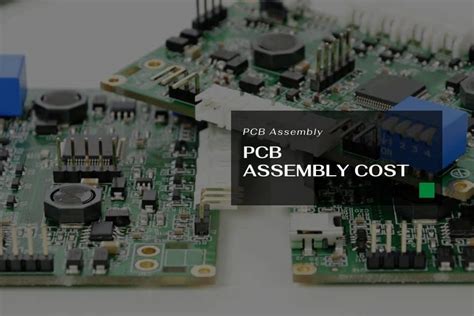Introduction
Printed Circuit Board (PCB) assembly is a critical process in the manufacturing of electronic devices. The cost of PCB assembly can significantly impact the overall cost of the final product. In this article, we will discuss the various factors that affect PCB Assembly Costs and provide tips on how to save your costs.
Factors Affecting PCB Assembly Costs
1. PCB Design Complexity
The complexity of the PCB design is one of the primary factors that affect assembly costs. A complex design with a high number of components, layers, and connections will require more time and resources to assemble, resulting in higher costs.
PCB Design Complexity Levels
| Complexity Level | Description |
|---|---|
| Simple | Single-sided board with few components and connections |
| Moderate | Double-sided board with moderate components and connections |
| Complex | Multi-layer board with high component density and connections |
2. PCB Size and Thickness
The size and thickness of the PCB also play a role in determining assembly costs. Larger and thicker boards require more material and take longer to process, resulting in higher costs.
Common PCB Sizes and Thicknesses
| PCB Size | Dimensions (mm) | Thickness (mm) |
|---|---|---|
| Small | 50 x 50 | 0.8 – 1.6 |
| Medium | 100 x 100 | 1.6 – 2.4 |
| Large | 200 x 200 | 2.4 – 3.2 |
3. Component Sourcing and Availability
The cost and availability of components used in the PCB assembly process can significantly impact overall costs. Rare or custom components may be more expensive and have longer lead times, increasing assembly costs.
4. Production Volume
The production volume of PCBs can also affect assembly costs. Higher volumes generally result in lower per-unit costs due to economies of scale and improved efficiency in the assembly process.
Production Volume and Cost Relationship
| Production Volume | Cost Impact |
|---|---|
| Low (1-100) | High |
| Medium (100-1000) | Moderate |
| High (1000+) | Low |
5. Assembly Technology and Equipment
The technology and equipment used in the PCB assembly process can also impact costs. Advanced equipment and automated processes may have higher upfront costs but can result in faster assembly times and lower labor costs in the long run.
Tips to Save Your PCB Assembly Costs
1. Optimize PCB Design
Optimize your PCB design to reduce complexity and minimize the number of components and layers. This can help reduce assembly time and costs.
2. Standardize Components
Use standardized components whenever possible to reduce sourcing costs and lead times. Avoid using rare or custom components unless absolutely necessary.
3. Consider Production Volume
Plan your production volume carefully to take advantage of economies of scale. Higher volumes can result in lower per-unit costs.
4. Partner with Reliable PCB Assembly Providers
Partner with reliable PCB assembly providers who have the necessary expertise, equipment, and processes to ensure efficient and cost-effective assembly.
5. Implement Effective Supply Chain Management
Implement effective supply chain management practices to ensure the timely availability of components and materials at competitive prices.

Frequently Asked Questions (FAQ)
1. What is the average cost of PCB assembly?
The average cost of PCB assembly varies depending on factors such as design complexity, size, and production volume. Simple designs can cost as little as $10 per unit, while complex designs can cost several hundred dollars per unit.
2. How can I reduce the cost of custom components in my PCB design?
To reduce the cost of custom components, consider redesigning your PCB to use standardized components whenever possible. If custom components are necessary, work with your suppliers to optimize the design and minimize costs.
3. What is the minimum production volume required to achieve cost savings in PCB assembly?
The minimum production volume required to achieve cost savings varies depending on the specific project and assembly provider. Generally, production volumes of 100 units or more can start to see cost savings due to economies of scale.
4. How can I ensure the quality of my PCB assembly while keeping costs low?
To ensure the quality of your PCB assembly while keeping costs low, partner with reputable assembly providers who have a proven track record of quality and reliability. Implement robust quality control processes and regularly audit your suppliers to maintain high standards.
5. What are the long-term benefits of investing in advanced PCB assembly technology and equipment?
Investing in advanced PCB assembly technology and equipment can provide long-term benefits such as faster assembly times, lower labor costs, and improved product quality. These benefits can help reduce overall costs and improve competitiveness in the market.
Conclusion
PCB assembly costs are influenced by various factors, including design complexity, component sourcing, production volume, and assembly technology. By understanding these factors and implementing cost-saving strategies such as design optimization, component standardization, and effective supply chain management, you can significantly reduce your PCB assembly costs. Partnering with reliable assembly providers and investing in advanced technology can also provide long-term benefits and help ensure the success of your electronic products.

No responses yet